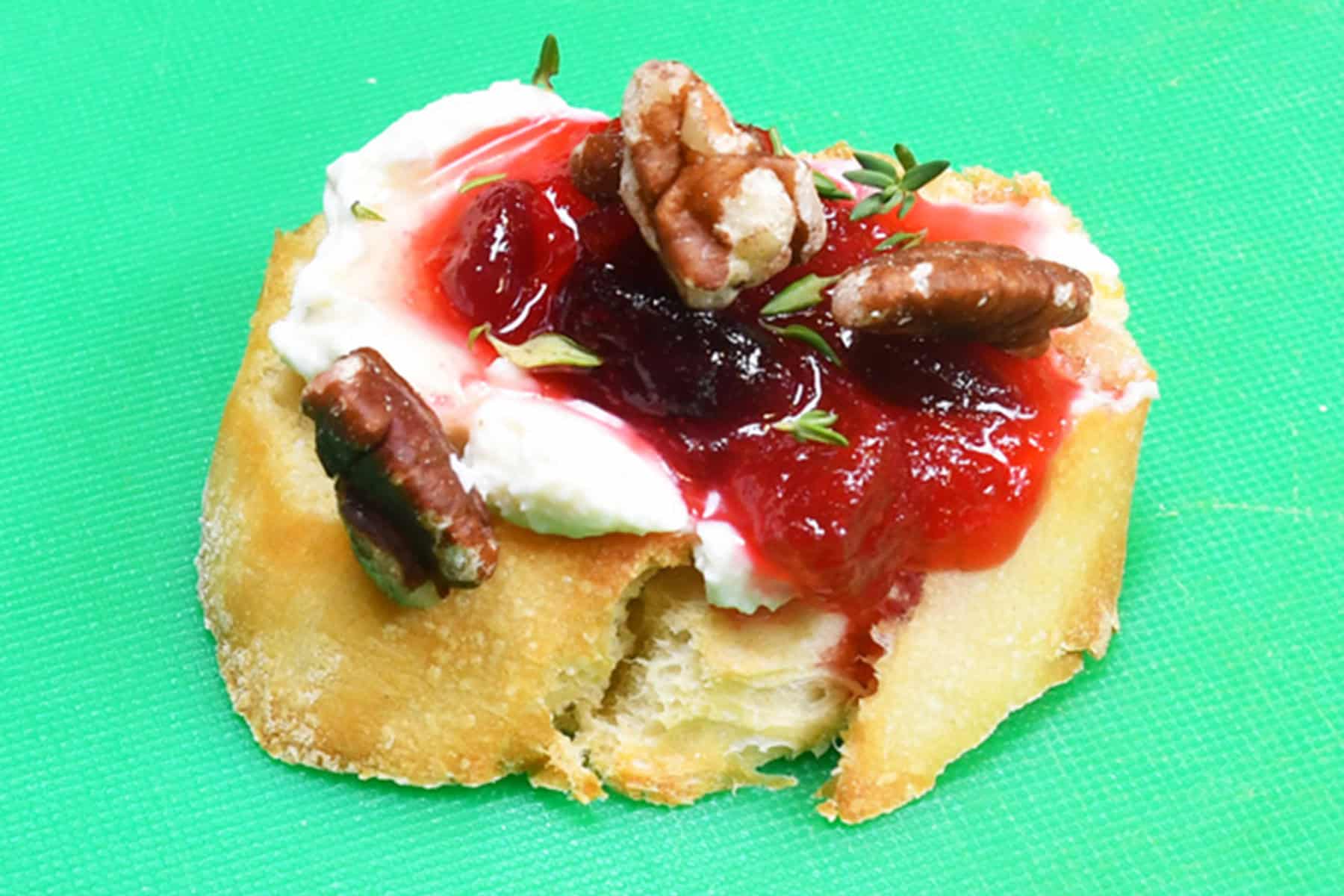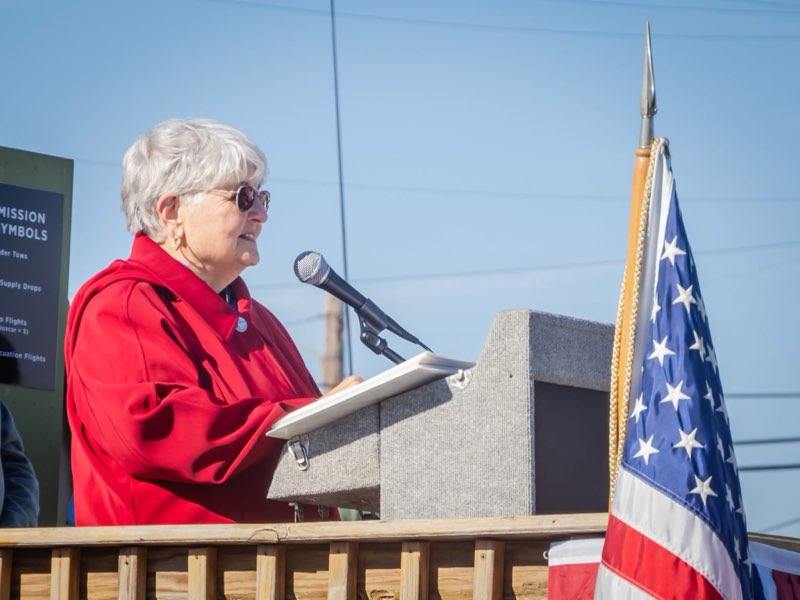Fiddler Crab Haven
Watching fiddler crabs on the salt marshes of the Delaware Bayshore is an exercise in stealthy patience.
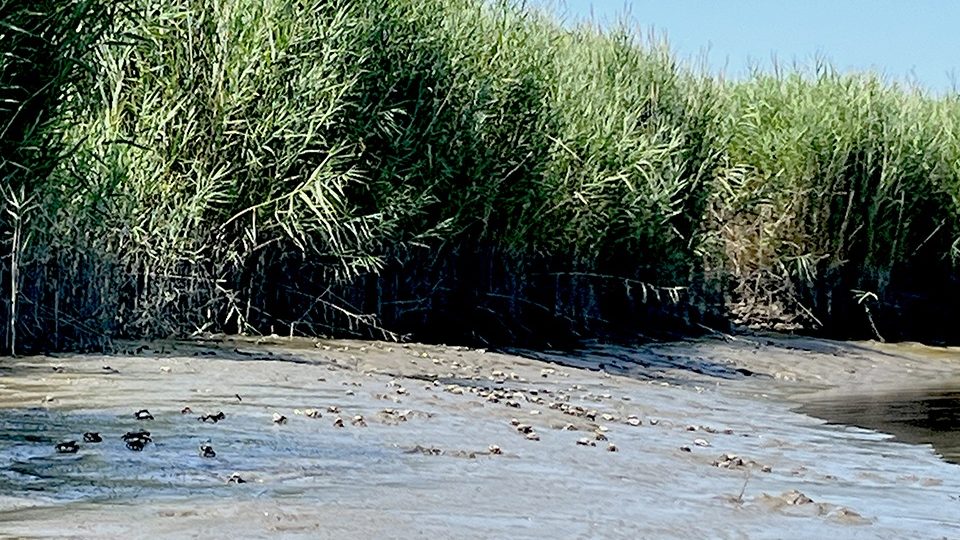
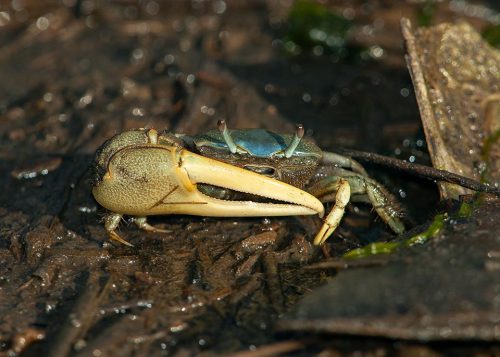
Recently I joined a group of CU Maurice River paddlers on the Muskee Creek, a tributary of the Maurice River, both of which are nationally designated U.S. Department of the Interior Wild and Scenic rivers. Our paddle began at Weatherby Road in Port Elizabeth and traversed southwest to the Maurice. The beginning of the paddle was floristically diverse, with a mixed marsh of pickerelweed, white cedars, arrow arum, swamp magnolias, sweet pepper bush, rushes, red maples, wild azaleas, and many other typical Pinelands species.
It was low tide, and as we meandered downriver the flora turned into a monoculture of invasive phragmites (common reed/ foxtail). It was like travelling between two high green walls, with a maze of ancient white cedar stumps reminding me of times past. Steep slopes of mud were topped by 15-foot shoots of phragmites gently waving their burnt sienna seed heads, like flags in the scarcely perceivable breeze. Had the day been gloomy depression might have set in, but the weather was glorious.
Then much to my delight we saw a group of amusing denizens clinging perilously to the steep banks beneath the wall of phragmites, climbing vertical walls sideways to escape into their burrows as they sought safety from harmless paddlers. But how could they know? These were fiddler crabs, hundreds to thousands of them. Each male extended his signature large claw in front of his burrow. The species is sexually dimorphic in that the female’s claws are proportional to her size. Conversely, while as a juvenile it only accounts for two percent of his body weight, the mature male’s claw or cheliped makes up 65 percent of his size!
This overly prominent claw is waved about at the entrance to his burrow to attract the ladies. The waving produces an acoustic signal, and at the same time he also stomps his walking legs to create vibrations. If the lady is receptive to his advances she will enter his burrow to mate, and will incubate her eggs there for two weeks. On the other hand, if predation is high the female may choose to stay in her burrow awaiting a male and avoid being attacked by a creature intent on having her for a meal. In this instance, mating occurs at the entrance to her burrow.
Fiddler crabs have stalked eyes that can be withdrawn or swivel around, allowing them to see in many directions. Their eyes are compound, with thousands of light sensors. They can easily detect rapacious birds as well as paddlers like us. This periscopic vision allows them to see across a field of creatures their own size and look skyward for birds that prey upon them.
We saw a large number of males with their large fiddler claws hanging out of their burrows. But at a specified distance, known only to them, they all ducked into their holes for protection.
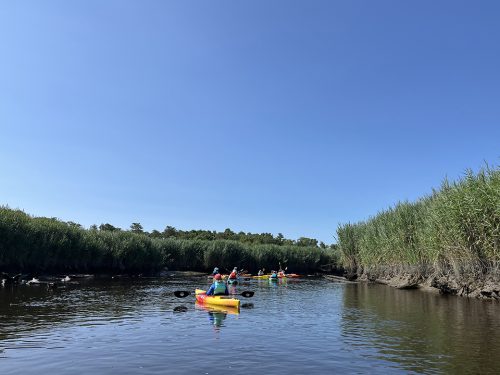
There are two species of fiddler crab in the Delaware Bayshore region—Uca pugnax and Uca minas. We were seeing Uca pugnax, the “Atlantic marsh fiddler.” In our region they spawn throughout the summer months, mating about every two weeks. The peak hatching time is July and August. Larvae are flushed out of creeks to the open waters of the Bay. These crabs have five zoeal stages as free-swimming microscopic larvae or plankton. Then they molt into larvae in what is known as the megalopa stage. The megalopae are transported back into the bay and tributaries where they molt once or twice. They are less than an inch to one and a half inches wide and live from 1.0 to 1.5 years of age.
As we passed the mudflats the males were present in large numbers. They appeared to be eating until we got too close for comfort, and then they scurried up the bank to the grasses. I would say that they weren’t on the prowl for mates because on the muddy flats they were not near holes nor did I see any females. However, feeding presents a risk. Like birds they hang out in a group for protection. The general principle of safety in numbers can involve a number of strategies. Many crabs mean many eyes and many individuals to signal alarm in the event of an intruder. Like a flush or burst of birds, when a number of crabs are scurrying sideways it is hard to pick out just one victim.
The other advantage of numbers relates to a popular joke. When there is a bear coming in your direction, you begin to switch from heavy hiking shoes to sneakers. Your hiking companion asks, “Why are you changing foot apparel? Aren’t you worried about the approaching the bear?” You reply, “Yes, but I only have to outrun you!” So numbers create confusion, and also make it more likely that the other guy will be getting whacked instead of you.
On the other hand the crabs also help one another. In the hole-y Swiss-cheese-like neighborhood of burrows they are socially aware. They will come to the aid of weaker neighbors trying to fight off burrow-snatching fiddlers (50 Current Biology).
Their intertidal colonies include a mixture of age and sexual makeup. They use a communication network that employs both visual and vibratory signals. It is clear that they have organized movements as they scurry sideways like an army of soldiers in drill formation. Often they will all pop into their burrows with uncanny synchronicity.
At low tide their burrow entrances are open but at high tide they block the entrance with sand. Burrows are also used for winter hibernation as well as a refuge from heat and predators; these include diamond-back terrapin, pigfish, channel bass, white catfish, rails, egrets, ibis, sea robins, racoons, blue claw crabs, and others.
Fiddler crabs themselves are herbivores, filter feeders that consume fungi, diatoms, vascular plants, microbes, algae, phytoplankton, and such. Either sex can regenerate (regrow) a lost limb. A male feeds with its small claw while females can feed with both.
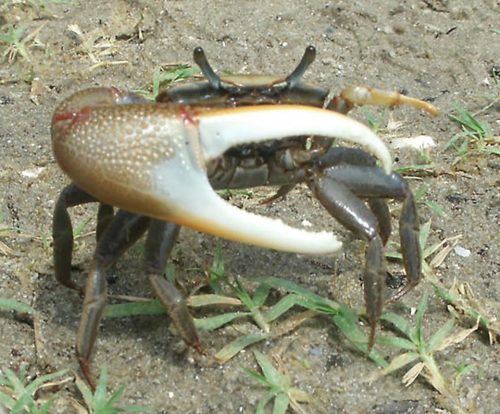
In previous articles we have discussed the fact that global warming is moving the migration of species’ ranges toward the poles as they try to maintain the temperatures in which they have evolved. The historic range of fiddler crabs was once from Florida to Cape Cod but they have now expanded their range into coastal Maine.
In their new locations the biomass of roots and rhizomes has dropped by 30 percent. Fiddler crabs are beneficial in their original home range because their burrowing efforts make up a complex that aerates the marsh plain’s soil. The burrows also increase soil drainage and allow more nutrients to be accessible to plants and thus are advantageous to root systems, enabling them to more easily penetrate the biomass. Undigested foods within the crabs’ feces provide organic nitrogens.
So why isn’t their burrowing helping the areas in which they are newer migrants? Scientists theorized that the plants north of Cape Cod have not developed during a millennium of co-existence like those along the southern coastal salt marsh. They are concerned that in this expanded range the plants may be unable to adapt to the increased nitrogen, aeration, and other benefits common to the more southern marsh plain.
Fiddlers are clearly an integral part of a marsh’s healthy ecosystem. I’ve not heard a crab stomp or fiddle, and I suspect you won’t either, but they can be a source of interest and amusement when they scramble about. If you are hoping to see fiddler crabs there are many places along the Bayshore that offer opportunities; the Thompson’s Beach viewing area in Maurice River Township is one good spot. Remember that they are very sensitive to movement so being still is helpful. You should take binoculars and a lot of patience! n
Sources
- Fiddler Crabs, 50 Current Biology, Vol. 16, Issue 2, January 2006. Jochen Zeil, Jan M. Hemmi, and Patricia R.Y. Blackwell
- Virginia Institute of Marine Science, Fiddler crabs are moving north as waters warm, and salt marsh grasses are suffering for it., 2023.
- Dynamics of larval patches: spatial distribution of fiddler crab larvae in Delaware Bay and adjacent waters. Marine Ecology Progress Series, June 2005. Christopher Petrone1, Lauren B. Jancaitis1, M. Brandon Jones et.al.
- Animal Diversity Website, Uca pugnax, Atlantic marsh fiddler.


